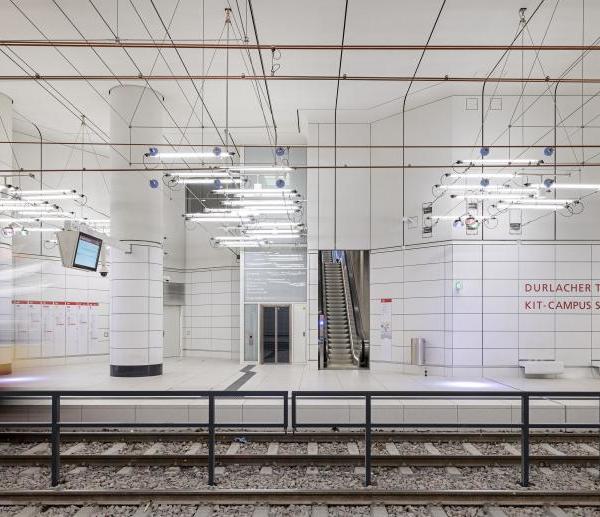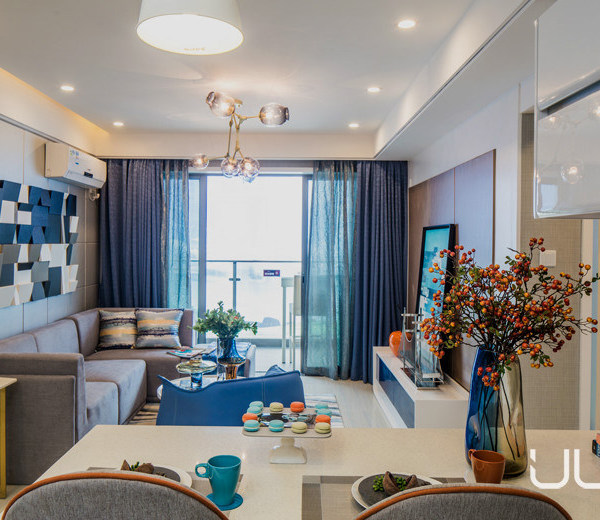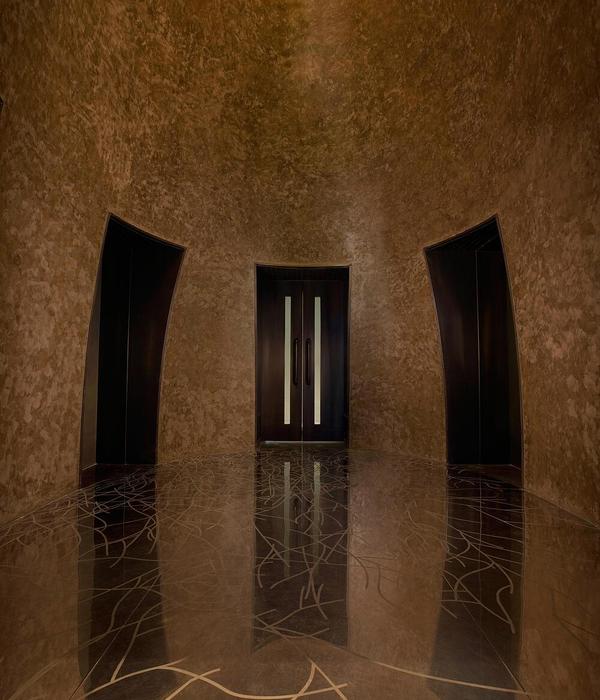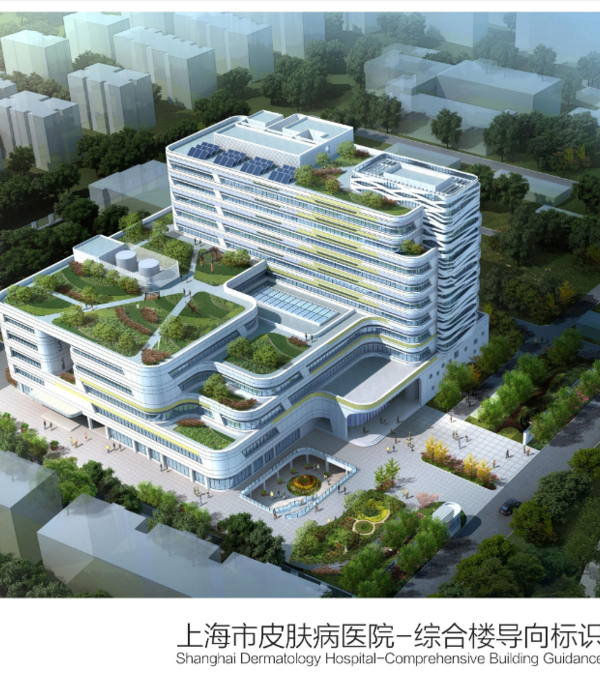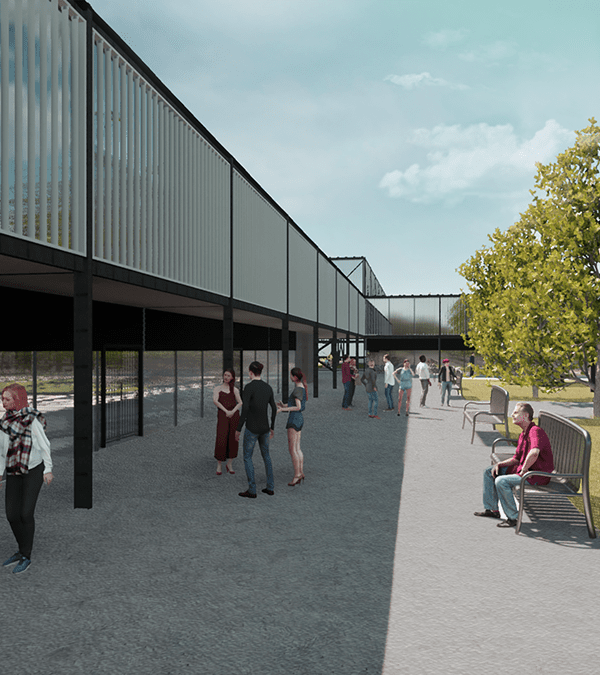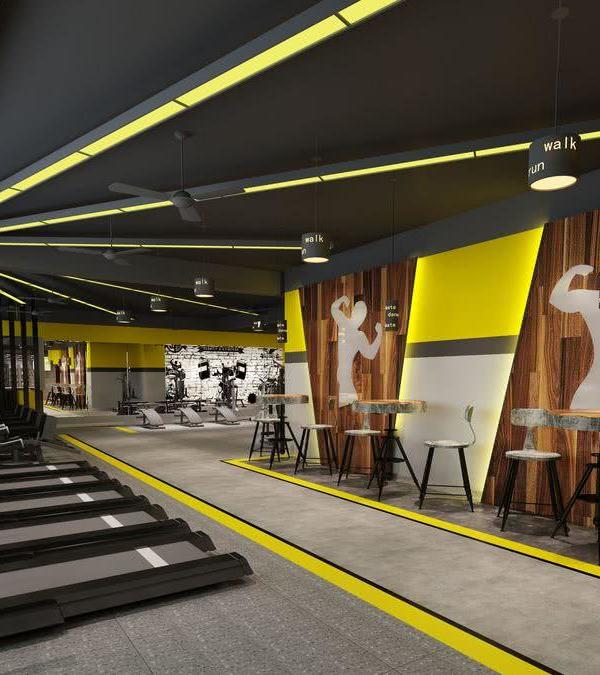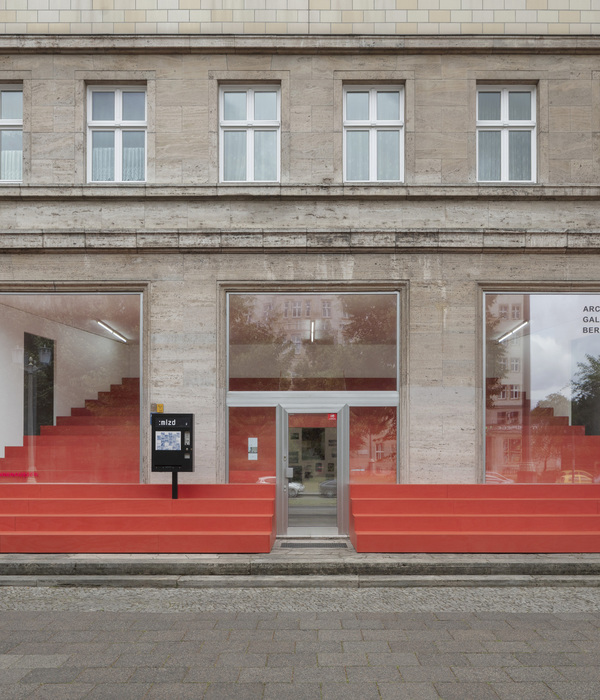位于西班牙广场的帕尔玛联运车站始建于2007年,和既有的火车站在同一位置。进入联运车站的方式主要是通过露天的楼梯行至地下楼层,漏斗状的通道极易导致人群滞留,在日晒或下雨时会带来不舒适的感觉。在扶梯进行维修时,拥堵的情况则更加严重。
▼项目概览,project overview
The Palma Intermodal Station was built in 2007, being located at the Plaza de España, the same place where the railway station already existed. The main access to the Intermodal Station was by stairs that went down uncovered toward the center of the station, with the inconvenience of eventual flooding – due to its funnel condition to the underground infrastructure -, creating discomfort for passengers on sunny days or rain and the continuous repairs of the escalators to be suffering the inclemencies of time.
▼入口原貌,Original state of the entrance
该项目旨在从两个方面改善上述的问题:一是置入新的水平屋顶结构,为通往联运巴士站和火车站的路径提供荫蔽;二是在入口处增加一个信息塔,使夹在两栋建筑之间的车站得以被突显出来。设计的实施方案十分简单:创建一个由陶瓷栅格围合的体量,在强调入口的同时尽可能地降低对周围传统建筑的干扰。这种简洁的处理手法既能够降低建筑的维护成本,又能够保证必要的防雨和遮阳功能。
▼纵剖面图,longitudinal section
The intervention focuses on two aspects: covering the access to the Intermodal Bus and Rail Station of Palma de Mallorca by means of a flat roof and emphasizing the location of the entrance by means of the location of an information tower, since it is partially hidden between two existing buildings. The proposal is based on a simple action by forming a volume composed of a ceramic latticework, which means a minimum transformation of the existing and traditional buildings around while emphasizing the entrance and simultaneously protecting the station’s entrance from water and requireing a minimum maintenance of the same as well, thanks to its simple entity.
▼新的水平屋顶结构为通往联运巴士站和火车站的路径提供荫蔽,a new flat roof was built to cover the access to the Intermodal Bus and Rail Station of Palma de Mallorca
陶瓷栅格的起始点与既有建筑的檐口保持平齐,使新旧体量在材料和颜色上形成工整的对应关系。
The start of the latticework is aligned with the cornice of the existing buildings, which creates a formal dialogue that complements the chromatic and material relationship between the new ceramics and the old buildings.
▼新旧体量的对话,a formal dialogue between the new ceramics and the old buildings
屋顶的边缘围合以“悬挂”的金属框架,并通过两组(每组三根)HEB-280立柱实现支撑;水平方向则使用了两根相互平行的UPN-400梁,托起由一系列齿槽板构成的屋顶。屋顶板穿插以天窗,以便在白天提供自然光照。UPN横梁的使用能够帮助管线设备穿过HEB立柱,并将光源固定在屋顶边缘,从而使陶瓷栅格在夜间为入口提供照明。
▼结构示意,construction detail
The roof is surrounded by armored lattice that “hangs” from a flat roof supported by two gantries of three HEB-280 pillars each. These porticos consist of two UPN-400 parallel beams that hold a series of alveolar plates pierced by skylights, to allow natural lighting of the entrance space during the day. This duplication of the UPN allows the passage of installations -pluvial and electrical- through the HEB pillars. During the night the lattice acts in an opposite way and becomes an illuminating element, allowing the light to pass through the ceramics, thanks to a series of luminaries placed around the perimeter.
▼陶瓷栅格在夜间为入口提供照明,the lattice becomes an illuminating element during the night
▼近乎透明的陶瓷栅格,partial view to the ceramic latticework
陶瓷栅格元件被固定在金属材质的子结构上,这一锚固系统由100×40根管体构成,并根据陶瓷元件的连接点进行调整。这些管体的厚度等于陶瓷元件加上灰泥接缝的厚度,因此从外观上察觉不到子结构的存在。
▼结构细部示意,construction details
The borders of ceramic pieces rest on a metallic substructure, the anchoring system, that is formed by 100×40 tubes and modulated according to the joint of the ceramic pieces. The thickness of said tubes coincides with the thickness of the mortar joint plus the wall thickness of the ceramic piece, in such way that the existence of said substructure is not perceived.
▼从外观上察觉不到子结构的存在,the existence of substructure is not perceived from
appearance
结构中的陶瓷元件是在建筑团队与Ceramica a mano alzada公司以及Ferres Ceramics工厂的合作下专门为该项目设计和制造。屋顶结构中使用了大约9000个尺寸为12 x 24 x12 cm的独立元件。每个元件呈现为一个带有对角线的镂空立方体,可以通过摆放方向的改变来创造独特的图案。
The ceramic pieces have been designed and created just for this project, working closely together with the company “Ceramica a mano alzada” and the Ferres Ceramics factory. About 9.000 single pieces of 12 x 24 x 12 cm each are forming the cube-like roof, a rectangle with a diagonal, that allows to place in both directions, being able to create different and unique patterns, while preventing the placement of pigeons in its nucleus.
▼陶瓷元件,the ceramic piece
位于路面的入口边缘铺设了新的复合板条带,并增加了玻璃护栏,保证了望向后方铁路公园的视野不受阻碍。
The new roof resolves the encounter with the existing pavement by incorporating a strip of composite panels, similar to the existing ones, which is topped with a glass railing, which recovers the vision of the gardens of the railway park, located just behind the entrance.
▼入口边缘地面铺设了复合板条带,new roof resolves the encounter with the existing pavement by incorporating a strip of composite panels
▼入口周围增加了玻璃护栏,the composite panels were topped with a glass railing
在车站的前方几英尺处的广场上还修建了一个标志性的信息塔,可以从西班牙广场的任何方向上望见。信息塔使用了与既有入口相同的复合材料。广场地面上的盲道也选用了与屋顶结构相同的陶瓷材料。
A square is created a couple of feet in front of the station, which is marked by the information tower and where it can be seen from anywhere in the Plaza de España. The tower is lined with composite, as is the existing entrance. In the strip that coincides with the latticework of the roof, ceramic pieces of the same characteristics are also placed.
▼信息塔,the information tower
▼场地平面图,site plan
▼首层平面图,ground floor plan
▼屋顶平面图,roof plan
▼立面图,elevations
▼横剖面图,cross section
{{item.text_origin}}

